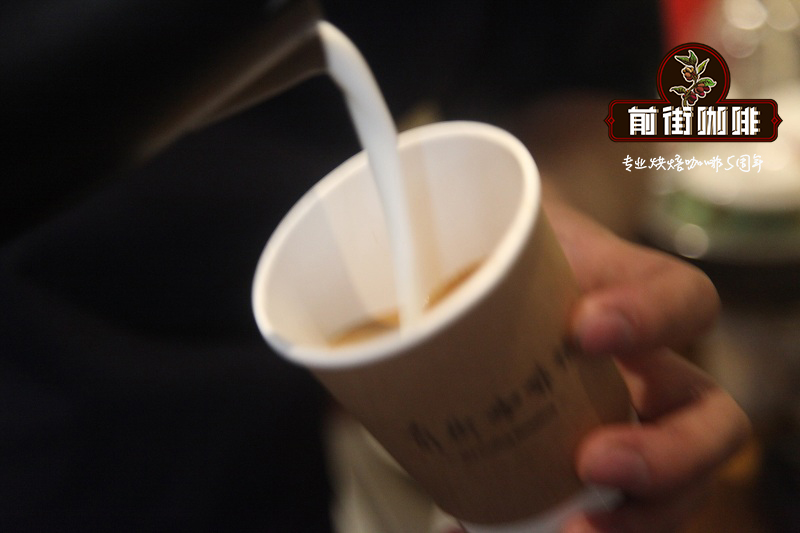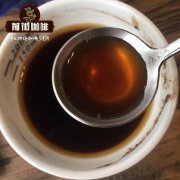Colombian Coffee region Story Colombian Coffee Bean Price Colombian Coffee Bean recommendation

Professional coffee knowledge exchange more coffee bean information please follow the coffee workshop (Wechat official account cafe_style)
On the cultivation of coffee beans in Colombia
Planting area and harvest season
Coffee bean cultivation in Colombia is distributed along the Andes Mountains, from south to north, roughly divided into northern producing areas (green), central producing areas (orange, purple) and southern producing areas (yellow), in which orange-purple areas have primary and secondary production seasons. green and yellow regions have one season.
Harvest season [by region]
Due to the differences in geographical and climatic characteristics from north to south, the north-south production season is just opposite, while the central part has its own primary and secondary production seasons according to whether it is south or north. It can be said that beans are produced all the year round. We mainly distinguish regions according to winter production season and summer production season.
The winter season is from September to December, including the following areas
Magdalena Magdalena common items
Santander Santander
Antioquia Andi O'Quia common items
North of Santander North of Santander
Boyaca Boyaca
Meta Matta
The central region near the north will have two primary and secondary seasons, the main season is from September to December in winter, and the secondary season is between April and May in summer.
Caldas Caldas
Risaralada Salala da
Parts of Cundinamarca Quintina Maka have begun to emerge in the market.
Some areas of Quinido Jindio began to emerge in the market.
Common items of sub-ashes in some areas of Tolima Tolima
The central region near the south will have two primary and secondary seasons, the main season is from March to June in summer, and the secondary season is from October to November in winter.
Parts of Valle Waye began to emerge in the market.
Parts of Quindio Kingdeo
Cundinamarca Quintina Maka part of the area
Part of Tolima Tolima
The summer production season is from March to June, including the following areas
Part of Valle Waye
The bone ash grade of Cauca test is common.
Cundinamarca Quintina Maka part of the area
Huila Huilan ashes are common
Narino Na Linglong secondary bone ash grade is common
Note: the production season here refers to the stage of post-processing when the coffee fruit is ripe and harvested in the producing area. Usually 2-3 months after this stage, the beans of the real new production season will arrive at our consumption end.
Planting pattern: 95% of the growers are small farmers, and the family planting area is less than 5 hectares.
Production: the average annual output of small farmers' families is 25 bags, each bag 70kg specification
Planting altitude: 1000-2500 m
Annual precipitation: 1000-2500 mm
Average annual temperature: 15.8-20.5 degrees Celsius
Planting varieties: in addition to Kaddura Caturra, Bourbon Bourbon, Tippika Typica and Parkmara, which are common in America, Colombia also has three disease-resistant varieties peculiar to Colombia, namely Castillo Castillo and Tabi Tabi Colombian Colombia with the same name as the country. Of course, there are also some rare and valuable varieties such as Rosa Gesha, small-grained Mocha Mocca, Rume Sudan Romer Sultan, Eugenioides Eugene Odes, Laurina pointed Bourbon, Maraguesa Mara Rosa (a natural hybrid between Malaggippe and Rosa).
Shade trees: the shade trees seen in coffee bean producing areas in Colombia are lemon trees and orange trees. their lemons bear lemons that look like oranges, but they taste sour, and there is a local way to eat them with a strong liquor, just like drinking cocktails. It tastes good.
Production season: the producing area of Colombian coffee beans is affected by the topography of the Andes, which is divided into three regions from south to north, northern, central, and southern; the northern part of the south has a distinct production season, and the central part has two primary and secondary seasons according to the north or the south, respectively, and there is information behind it.
Treatment methods: water washing is the main way, and now there are sun and honey treatment methods; in water washing methods, most of the conventional fermentation processes are anhydrous fermentation Dry Fermentation, open environment; now there are some processes that introduce red wine treatment into coffee treatment to do anaerobic and oxygen-controlled fermentation treatment.
Drying: after drying, there are greenhouse Green House (not as big as the vegetable growing greenhouse in our countryside, think about the size of the balcony sunshine room), drying field Patio (an open space on the cement floor, recently seen wooden floor), dryer (many small farmers have this at home)
[about FNC]
Industry chain: Columbia Coffee producers Association FNC, Colombia National Coffee Research Center CENICAFE, regional coffee production associations (Colombia has 32 regional Departments, of which 20 are coffee growers), traders, international roasters, and you, "God" who read the words.
The greatest purpose of FNC is to be the spokesman of Colombian coffee, promising that FNC is willing to buy as long as coffee farmers are willing to sell coffee. FNC is not only the international ambassador of Colombian coffee beans to do coffee marketing in the international market, successfully creating the image of "Uncle Juan"; at the same time, Colombia has also invested a lot of manpower and material resources to participate in farmers' planting and production, management and continuous operation.
CENICAFE was founded in 1938, as the technical support of FNC, committed to coffee variety breeding, farmers planting production agronomic training.
About the variety
The early varieties planted in Colombia were the old iron pickup and bourbon, which were replaced by Kaddura in 1970; Kaddura is not only more productive per plant than iron pickup and bourbon, but also can be planted more per unit of acreage because the tree is more compact.
Since 1961, CENICAFE began to study Timor varieties of Robusta blood, and then selected Timor and Caturra into Columbia's Katim Catimor series. After five generations of breeding, CENICAFE released Colombia's first disease-resistant variety Colombia in 1982, and then after the emergence of leaf rust in 1983, Colombia varieties began to be planted in large quantities.
Subsequently, CENICAFE continued its research and development, releasing the second disease-resistant variety Tabi (a hybrid of iron pickup, bourbon and Timor) in 2002, and the most functional disease-resistant variety Castillo so far in 2005. After the outbreak of leaf rust in 2008, Colombia began to vigorously promote Castillo cultivation.
Implementation and support of Castillo varieties
This is a coffee reform support loan program launched in Colombia in 2012 for small farmers to grow a disease-resistant variety Castillo.
A seven-year loan scheme
At the time of final repayment, farmers only need to return 60% of the principal, and the other 40% will be borne by the government (some banks are willing to pay the bill)
You don't have to make any repayment in the first two years of the loan.
The annual interest rate is 11% at the beginning of the third year, and the farmers will repay the loan every year after the funds are collected at the end of the production season.
Of course, whether farmers transplant Castillo is completely voluntary, the above plan is only for Castillo planting trial.
The latest news is that CENICAFE released a new disease-resistant variety CENICAFE 1 in December 2016, which is also a hybrid of Kaddura and Timor (1343). It has the same good flavor as Castillo, has a higher yield and is resistant to leaf rust and coffee beetles.
About how to deal with it
Colombian coffee beans are mostly washed, and each small farmer family has a small special processor (Ecomill or Eco-Pulper). The harvested coffee fruit is poured into it, which removes not only the peel and pulp, but also most of the pectin, and only a very small amount of water is needed. Next, the shell beans with a small amount of pectin will go into a small pool or container, which may be a cement pool (some tiles) or a stainless steel bucket that will ferment overnight and loosen the residual pectin. Rinse with clean water the next day, and the washing process is completed.
Dry, according to the weather, if the weather is good, of course the first choice is natural drying, there will be a small shed laid on the wooden scaffolding to dry in the shade; otherwise, it will be laid on an empty cement floor for drying; if the weather is not good, if it rains continuously, then use a dryer to dry, the dryer will have an intake temperature control, usually about 50 degrees Celsius.
About the coffee competition
There are two forms of international coffee competition in Colombia from 2005 to now.
2005-2015 Magazine Coe
Since 2016, Colombia has organized its first international coffee competition, named LAND OF DIVERSITY, and conducted its first offline auction. The new competition also has a great change compared with the competition system of CoE.
It is divided into two categories: small batches (SMALL BATCH) and large batches (LARGE BATCH). For the first time, large batches (LARGE BATCH) are included in the bidding system; small batches start at US $5 / lb and large quantities start at US $2 / lb.
The classification of coffee is evaluated by attributes, and the five attribute categories of small batches of coffee are evaluated in the tournament. Each coffee can be nominated in one or more categories and win the final championship award in this category.
The five attributes are classified as sour Acidity, taste Body, balance Balance and flexibility Mildness.
Columbia Coffee Bean Brand recommendation
The Colombian coffee beans baked in front street coffee are fully guaranteed in terms of brand and quality. More importantly, the performance-to-price ratio is extremely high, a box of 227 grams, the price is only 95 yuan. According to the calculation of 15 grams of powder per cup of coffee, a bag of coffee can make 15 cups of coffee, which costs only about 6 yuan per cup, which is recommended by conscience compared to the price sold in cafes for dozens of yuan a cup.
Important Notice :
前街咖啡 FrontStreet Coffee has moved to new addredd:
FrontStreet Coffee Address: 315,Donghua East Road,GuangZhou
Tel:020 38364473
- Prev

Indonesian Coffee Origin Story Indonesian Coffee recommended must visit Jakarta-Anomali kopi
Professional coffee knowledge exchange more coffee bean information please follow the coffee workshop (Wechat official account cafe_style) this time to Jakarta, I exchanged friends with me in Jakarta to ask if there is a recommended, exquisite self-roasting coffee shop, before in Jakarta has not found a suitable self-roasting, fresh coffee beans, can only buy that kind from the supermarket, Starbucks
- Next

The History of growing Coffee in Colombia and the famous Manor how much is a cup of Colombian coffee?
Professional coffee knowledge exchange more coffee bean information Please follow the coffee workshop (Wechat official account cafe_style) the history of coffee bean cultivation in Colombia, which can be traced back to the Spanish colonial era in 16th century, and there are many theories about the history of coffee in Colombia: one: it is said to come by sea from the island of the Caribbean, through El Salvador in Central America. Second,
Related
- Does Rose Summer choose Blue, Green or Red? Detailed explanation of Rose Summer Coffee plots and Classification in Panamanian Jade Manor
- What is the difference between the origin, producing area, processing plant, cooperative and manor of coffee beans?
- How fine does the espresso powder fit? how to grind the espresso?
- Sca coffee roasting degree color card coffee roasting degree 8 roasting color values what do you mean?
- The practice of lattes: how to make lattes at home
- Introduction to Indonesian Fine Coffee beans-- Java Coffee producing area of Indonesian Arabica Coffee
- How much will the flavor of light and medium roasted rose summer be expressed? What baking level is rose summer suitable for?
- Introduction to the characteristics of washing, sun-drying or wet-planing coffee commonly used in Mantenin, Indonesia
- Price characteristics of Arabica Coffee Bean Starbucks introduction to Manning Coffee Bean Taste producing area Variety Manor
- What is the authentic Yega flavor? What are the flavor characteristics of the really excellent Yejasuffi coffee beans?

